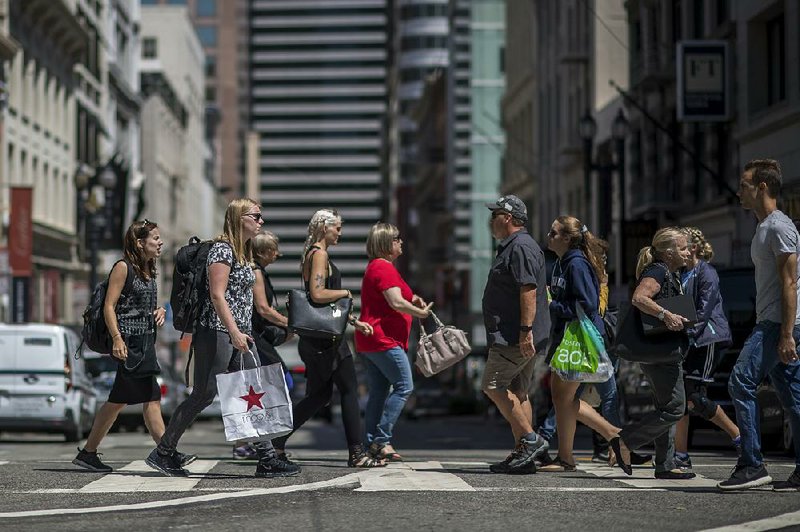Checkout lines at most American retailers were noticeably shorter in July as sales stalled after one of the strongest quarters in years, indicating consumer spending will cool in the third quarter.
The Commerce Department on Friday said purchases totaled $457.7 billion last month, little changed from the $457.9 billion in June. That reflected declining receipts at eight of 13 major categories -- including service stations, grocery stores and clothing shops -- that offset improving demand for autos.
"I don't want to get dark on the consumer, but this latest report adds to the list of uncertainties about the back half of the year and keeps the Fed in kind of a wait-and-see approach to policy," said Kevin Cummins, an economist at RBS Securities Inc. in Stamford, Conn.
Excluding cars, retail sales retreated 0.3 percent in July, the most since the start of the year. Core purchases, the figures that are used to calculate gross domestic product and which exclude such categories as auto dealers, gasoline stations and building-materials merchants, were also little changed last month after a 0.5 percent increase in June.
The figures prompted some economists to trim their third-quarter growth forecasts. Macroeconomic Advisers shaved its tracking estimate to 2.9 percent from 3 percent, while Barclays economists lowered theirs to 1.8 percent from 2 percent.
Also Friday, the University of Michigan's preliminary consumer sentiment index for August rose less than forecast, reflecting a pullback in views on personal finances among younger Americans. The report also showed that while respondents increasingly expect Democratic nominee Hillary Clinton to defeat Republican Donald Trump in the November election, neither candidate was viewed as more likely to improve economic conditions or Americans' personal finances.
Separately, the Labor Department reported Friday that the producer price index dropped 0.4 percent in July, the biggest decline since September. The report showed energy costs fell 1 percent, while food dropped 1.1 percent. Profit margins at retailers and other trade services also retreated, led by a 6 percent plunge at clothing and jewelry merchants that was the biggest since records began in 2009.
Treasurys rallied and the dollar fell after the figures on sales and producer prices added to speculation the Federal Reserve will be in no rush to raise interest rates this year. The U.S. 10-year yield dropped below 1.5 percent, while the dollar fell to a seven-week low.
Central bankers say they expect inflation to gradually rise to its 2 percent goal and have taken some comfort from a recent uptick in wages. That said, the Fed's preferred gauge of price pressures increased only 0.9 percent in the 12 months through June and has been below target since 2012.
The lack of progress toward the goal has led Chicago Fed President Charles Evans to argue that the central bank might want to consider not raising rates again until inflation is clearly back above 2 percent. San Francisco Fed chief John Williams, however, told the Washington Post in an interview published Thursday that he didn't favor waiting that long.
Information for this article was contributed by Alister Bull of Bloomberg News.
Business on 08/13/2016
